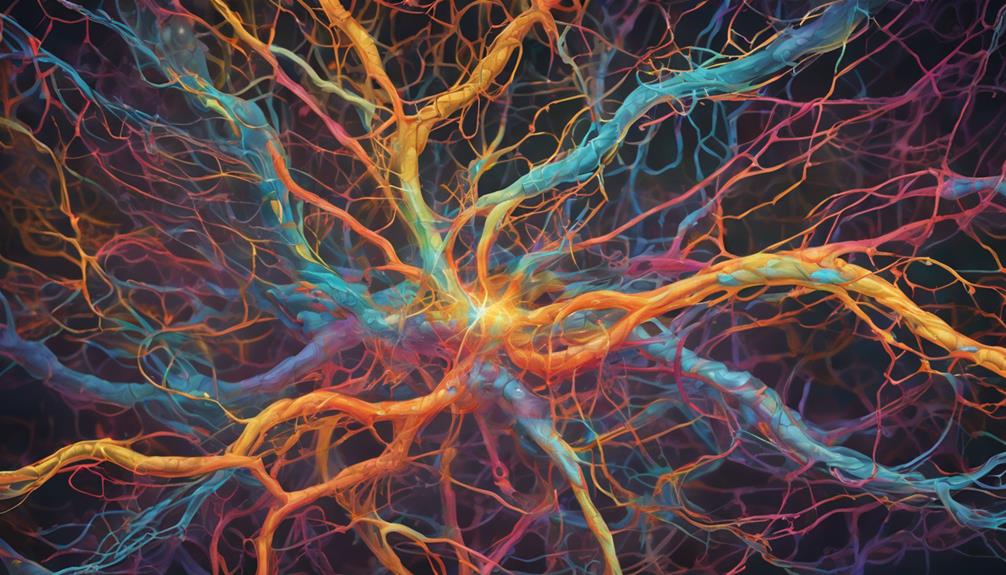The process of brain development unfolds through a meticulously orchestrated sequence of events, from the initial formation of neural cells to the intricate wiring of neural circuits. As neurons establish connections and refine their communication pathways, the brain undergoes a continuous sculpting process that shapes its functionality and structure. Understanding the interplay of genetic, environmental, and neurobiological factors in this intricate dance of neural development offers a fascinating glimpse into the complexities that underpin our cognitive abilities and behaviors. This exploration into the dynamic landscape of brain development unveils a captivating journey of growth and adaptation that captivates researchers and enthusiasts alike, beckoning them to unravel the mysteries of our most enigmatic organ.
Key Takeaways
- Neurulation, neurogenesis, migration, synaptogenesis, and myelination are key processes in brain development.
- Synaptic growth and pruning optimize neural circuits for cognitive abilities and behavior.
- Timing of pruning and dynamic changes in synaptic connections shape cognitive development.
- Environmental factors and genetic predispositions interact to influence brain development across the lifespan.
Early Brain Development Processes
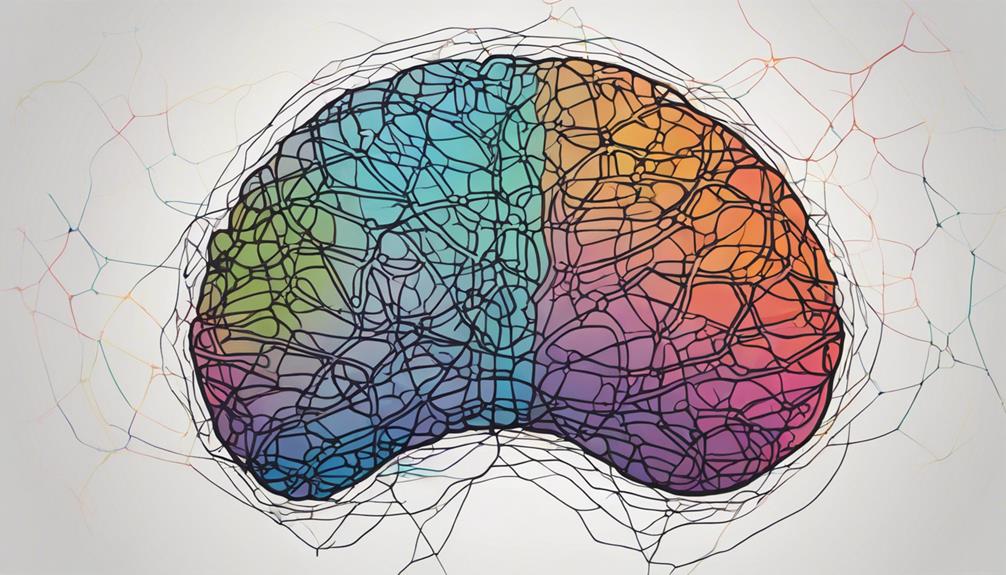
During the early stages of brain development, a series of intricate processes orchestrate the formation, migration, and connectivity of neural cells, laying the foundation for the complex network that governs our cognitive functions. Neurulation and neurogenesis are fundamental processes that give rise to brain cells, while migration ensures these cells reach their designated locations within the developing brain. Synaptogenesis plays a crucial role by establishing connections between nerve cells, forming the basis for communication and information processing. These neural connections, established during the early childhood years, are essential for the development of cognitive abilities and behavior.
Furthermore, myelination, a process where nerve cells are insulated for faster impulse transmission, enhances the efficiency of neural communication. It is noteworthy that postnatal neurogenesis continues into adulthood, contributing to ongoing brain development and plasticity. Understanding these early brain development processes provides insights into the intricate mechanisms that shape our cognitive abilities and behavioral patterns throughout life.
Synaptic Growth and Pruning
Synaptic growth and pruning are fundamental processes in brain development, shaping the intricate network of connections between neurons. While synaptic growth establishes communication points, pruning refines these connections by eliminating redundant or weak synapses. This dynamic interplay between growth and pruning is essential for optimizing neural circuits, enhancing brain plasticity, and fostering efficient information processing.
Synaptic Connections Formation
In the intricate process of brain development, the formation of synaptic connections undergoes rapid phases of overproduction and subsequent pruning to refine neural circuitry. Synaptic connections proliferate abundantly in the developing brain, exceeding the final number needed for efficient neural communication. This overproduction provides flexibility for learning and adaptation. However, to streamline neural pathways and enhance efficiency, unused or less active synapses undergo pruning. The timing of this process is crucial, with different brain regions exhibiting peak synaptic overproduction at varying ages. For example, the prefrontal cortex, responsible for higher-order cognitive functions, completes significant pruning during late adolescence, shaping decision-making abilities. These dynamic changes in synaptic connections underpin the intricate development of brain function and cognitive abilities.
Importance of Pruning
Efficient neural circuitry optimization through the process of pruning plays a critical role in refining the structural foundation of the brain. Pruning is a crucial mechanism in neural plasticity, enhancing the brain's efficiency by eliminating unused or weak synapses. Here are key points about the importance of pruning:
- Pruning refines neural circuits by strengthening important connections and removing unnecessary ones.
- Peak synaptic pruning occurs during adolescence, fine-tuning communication between neurons.
- Proper pruning is essential for optimal cognitive functions and adaptive behaviors in individuals.
- This process ensures that the brain functions at its peak capacity, optimizing its ability to process information and adapt to changing environments.
Brain Plasticity Effects
The intricate interplay between synaptic growth and pruning in the brain's neural circuits is a fundamental aspect of brain plasticity effects. Synaptic growth involves the formation of new connections, while synaptic pruning eliminates unnecessary or weak connections, optimizing brain function. This balance is crucial as synaptic plasticity allows the brain to adapt and reorganize based on experiences and learning. Disruptions in this process can lead to neurological disorders or cognitive deficits. The table below summarizes key points about synaptic growth, pruning, and plasticity:
| Aspect | Description | Importance |
|---|---|---|
| Synaptic Growth | Formation of new connections between nerve cells in the brain | Allows for learning and memory formation |
| Synaptic Pruning | Elimination of unnecessary or weak connections to optimize brain function | Enhances the efficiency of neural circuits |
| Synaptic Plasticity | Brain's ability to adapt and reorganize based on experiences and learning | Essential for development, learning, and recovery from injuries |
Neurogenesis in Postnatal Period
During the postnatal period, the brain undergoes a process known as neurogenesis, which involves the production of new nerve cells in adulthood. This phenomenon challenges the traditional belief that the adult brain does not generate new neurons. Key points about neurogenesis in the postnatal period include:
- Postnatal neurogenesis results in the creation of new nerve cells during adulthood.
- Regions such as the hippocampal dentate gyrus and prefrontal cortex are known to be active sites for generating new neurons.
- The significance of adult neuronal additions to brain function is a subject of ongoing research, with implications for learning, memory, and cognitive processes.
- Studies supporting the concept of continuous brain remodeling throughout life highlight the dynamic nature of the brain and its capacity for adaptation.
Understanding the mechanisms and implications of neurogenesis in the postnatal period is crucial for unraveling the complexities of brain development and function across the lifespan.
Impact of Environmental Factors

Continued exploration of the impact of environmental factors on brain development reveals critical insights into how external influences shape neural architecture and function. Exposure to environmental insults such as toxins or malnutrition during crucial developmental stages can disrupt the formation of neural connections and alter brain structure, impacting cognitive abilities. These insults can interfere with processes like neuronal migration and synaptogenesis, leading to long-lasting abnormalities in the brain. Early identification and intervention are crucial to counteract the negative effects on brain development. It is important to note that genetic information plays a significant role in how the brain responds to environmental factors, as genes and environment interact to determine the neural pathways and functions that develop. Understanding the intricate interplay between genetic predispositions and environmental influences is vital in comprehending the complexities of brain development.
| Environmental Factors | Impact on Brain Development |
|---|---|
| Toxins | Impair neural connections |
| Malnutrition | Long-lasting effects on brain structure and cognition |
| Disrupted processes | Brain abnormalities |
Biological Influences on Brain Development
In the intricate landscape of brain development, biological influences intricately weave with genetic predispositions and environmental stimuli to sculpt the neural pathways and functions that define individual cognitive capabilities. When considering biological influences on brain development, several key factors come into play:
- Neurons: These are the building blocks of the brain, responsible for transmitting information through electrical and chemical signals. The formation, connectivity, and pruning of neurons are crucial processes in brain development.
- Genes: Genetic factors play a significant role in shaping individual differences in brain structure and function. They influence the development of various brain regions and pathways, ultimately impacting cognitive abilities.
- Environmental influences: While genetics provide a blueprint, environmental factors such as nutrition, exposure to toxins, and early life experiences can modify gene expression and alter brain development trajectories.
- Interplay of factors: The interaction between genes and the environment is complex and dynamic, constantly shaping and reshaping the brain throughout development. Understanding this interplay is essential for comprehending the full spectrum of influences on brain growth and function.
Prematurity and Brain Growth
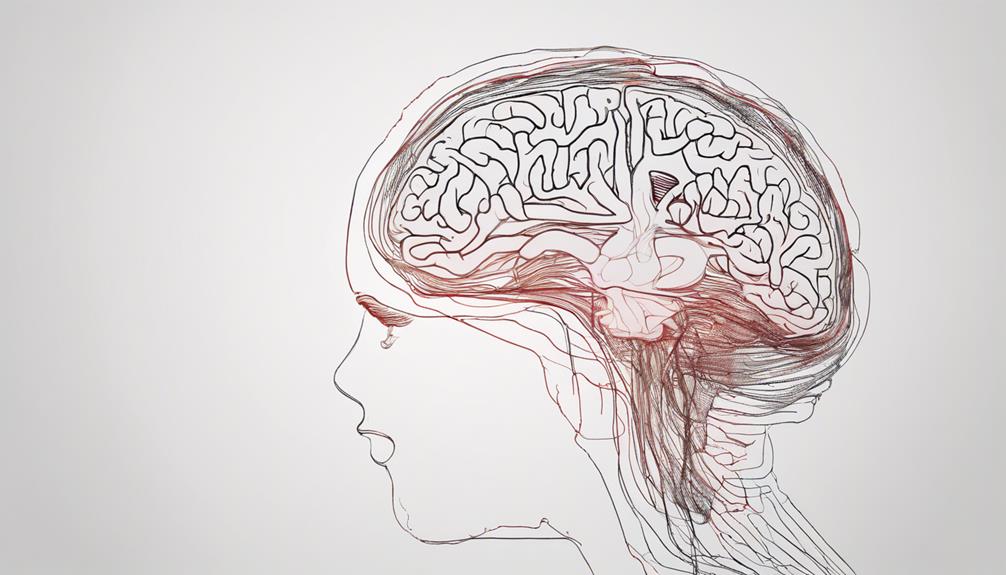
Premature birth profoundly influences the trajectory of brain growth in infants, presenting unique challenges and considerations for their neurological development. Compared to full-term babies, premature babies often have lower brain volumes, and their brain growth continues outside the womb but may be delayed or altered. This delay can impact crucial processes such as myelination, which is the development of the protective covering of nerve fibers, and synaptic development, which involves the connections between brain cells.
Due to these differences, early interventions and specialized care are essential to support optimal brain growth in premature infants. Monitoring the brain development of premature babies is crucial for understanding their long-term outcomes and implementing appropriate interventions. By providing targeted support and interventions tailored to the specific needs of premature infants, healthcare professionals can help mitigate the potential impacts of prematurity on brain growth and development, ultimately improving the overall neurological outcomes of these vulnerable infants.
Effects of Stress on Brain Development
The impact of stress on brain development is a critical area of research that underscores the significance of supportive environments in fostering optimal neural growth and resilience. Prolonged exposure to high levels of stress, particularly without adequate support, can lead to the concept of toxic stress, which impairs neural connections in areas related to higher-order skills. This impairment can result in lifelong challenges in learning, behavior, and overall health outcomes. Supportive relationships and environments are essential in mitigating the negative effects of toxic stress on brain development, highlighting the crucial role they play in promoting healthy neural development. Toxic stress has the potential to disrupt the formation of new neural connections and hinder the brain's ability to adapt and respond effectively to various stimuli. Understanding these dynamics emphasizes the importance of creating nurturing and supportive environments to facilitate optimal neural growth and resilience.
Brain Plasticity in Childhood
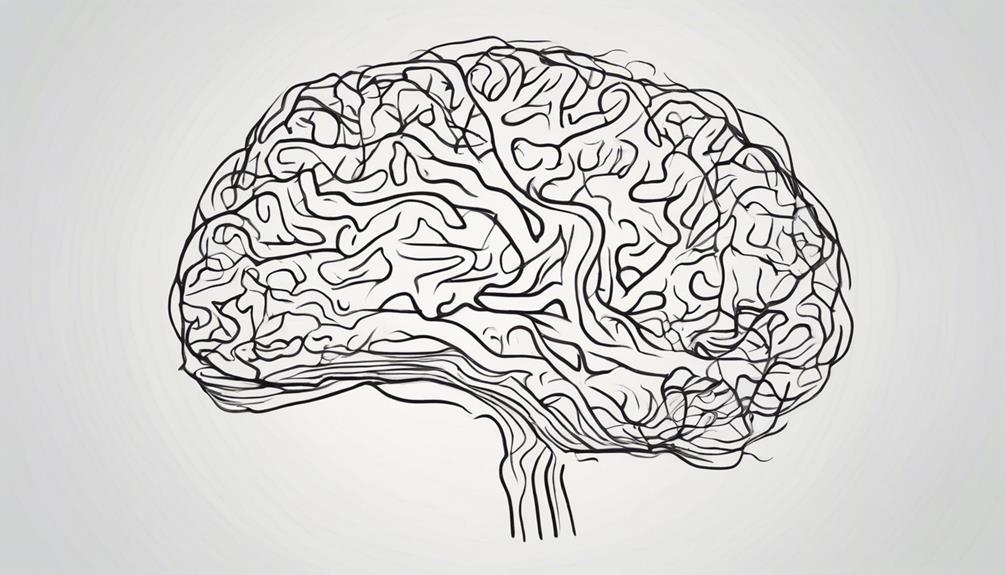
During the formative years of childhood, the brain exhibits remarkable plasticity, enabling the formation of new neural connections in response to environmental stimuli and learning experiences. Brain plasticity in childhood refers to the brain's ability to reorganize itself by establishing these neural connections. This malleability and adaptability of the brain during childhood are crucial for the development of various cognitive functions. Early childhood experiences play a pivotal role in shaping the brain's structure and function through plasticity. The interactions, stimuli, and learning opportunities encountered during this period significantly influence the establishment of neural pathways. The plasticity of the brain in childhood allows for the acquisition of new skills, knowledge, and behaviors based on these experiences. Therefore, providing enriching environments and positive stimuli during childhood is essential for fostering healthy neural development and maximizing the brain's potential for learning and adaptation. By understanding and harnessing the mechanisms of plasticity, we can better support children's cognitive development and overall well-being.
Neuronal Connectivity in Adolescence
In the period of adolescence, the refinement of neuronal connectivity through synaptic pruning plays a crucial role in optimizing brain function. This process involves the elimination of unnecessary synapses, allowing the strengthening of essential connections for efficient neural communication. During adolescence, the prefrontal cortex, crucial for decision-making and impulse control, undergoes significant changes in synaptic connectivity, shaping cognitive abilities and emotional regulation. This period is pivotal for synaptic refinement, enhancing the speed and effectiveness of neural processes. Additionally, the continued development and strengthening of synaptic connections throughout adolescence significantly influence various cognitive functions. Moreover, increased myelination during this phase improves the speed and coordination of neural signals, ultimately enhancing overall brain function.
- Synaptic pruning refines neural connections
- Prefrontal cortex undergoes significant changes
- Adolescence enhances efficiency of neural communication
- Increased myelination improves neural signal speed
Adult Brain Development and Aging
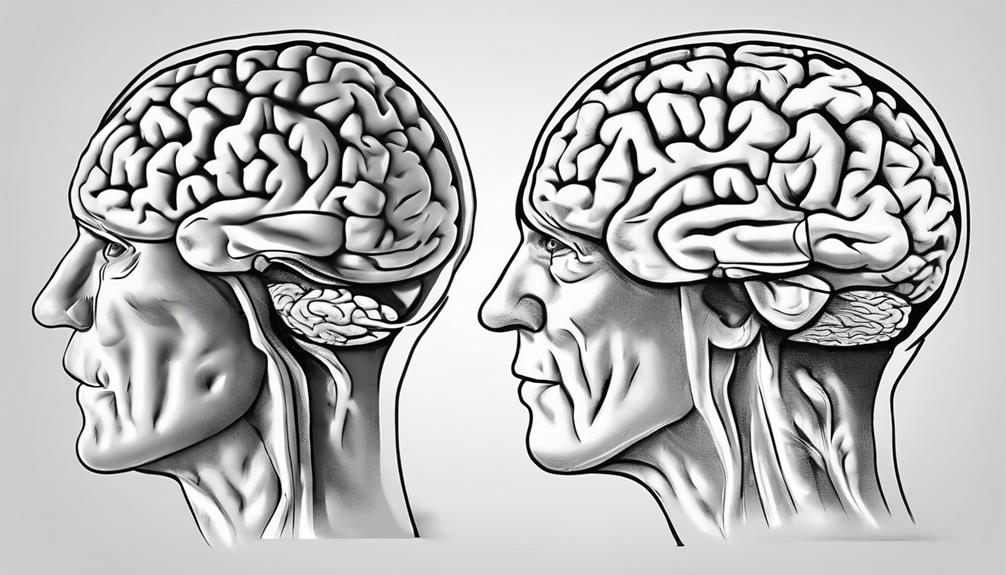
Continuing throughout adulthood, the brain undergoes ongoing structural and functional changes as part of the natural aging process. Aging often results in a decrease in brain volume, particularly in regions associated with memory and cognitive functions. These changes can also impact neural connectivity, affecting the efficiency of communication between different brain regions. As a consequence, cognitive abilities such as processing speed and memory may exhibit decline with age. Despite these challenges, it is essential to note that the adult brain retains a degree of plasticity, allowing for adaptation to new experiences and environments. Engaging in mentally stimulating activities, maintaining social connections, and adopting a healthy lifestyle can help support brain health and function as individuals age. By promoting neural plasticity and preserving neural connections, individuals can potentially mitigate some of the cognitive effects associated with aging, highlighting the importance of proactive brain health strategies throughout adulthood.
Frequently Asked Questions
What Are the 5 Stages of the Brain Development?
The 5 stages of brain development encompass neurulation, migration, axon and dendrite growth, synaptogenesis, and maturation/pruning. These processes culminate in the establishment of neural connections critical for cognitive growth. Infant milestones are achieved through the development and refinement of these stages, leading to the formation of intricate neural networks. Understanding these fundamental stages is essential for comprehending the complex interplay of events that shape the structure and function of the developing brain.
How Does the Brain Develop as We Age?
As we age, the brain undergoes a complex series of changes. Cognitive decline is a common concern, yet research shows that brain plasticity, the brain's ability to reorganize itself by forming new neural connections, remains intact. Despite some decline in memory retention, older brains can compensate by relying on established neural networks. The aging process also involves structural alterations in the brain, highlighting the importance of cognitive stimulation and healthy lifestyle practices to support brain health.
What Builds the Brain?
The development of the brain is intricately influenced by genetic factors and environmental influences. These factors guide the formation of neural connections, essential for the growth and organization of the brain. Genetic instructions determine the initial blueprint for brain development, while environmental stimuli shape and refine the neural connections through experiences and interactions. It is this dynamic interplay between genetic predispositions and external factors that ultimately builds and molds the complex structure of the brain.
How Does the Brain Change and Develop From Birth?
The brain undergoes remarkable changes and development from birth, with a rapid increase in neural connections that shape cognitive abilities. This process involves synaptic pruning and plasticity, influenced greatly by early experiences. The brain's growth is a dynamic interplay of genetic factors and environmental stimuli, with early childhood interactions playing a pivotal role in establishing the foundation for complex abilities. Understanding this intricate process sheds light on the importance of nurturing brain development in the formative years.
Conclusion
In conclusion, the intricate process of brain development involves various stages such as neurulation, neurogenesis, synaptic growth, and pruning, postnatal neurogenesis, and neuronal connectivity. Environmental factors, biological influences, and stress can all impact the development of the brain. Understanding these processes is crucial in comprehending the complexities of brain development from early stages to adulthood and aging. Further research is needed to uncover the full extent of how our brains develop and adapt throughout our lives.
